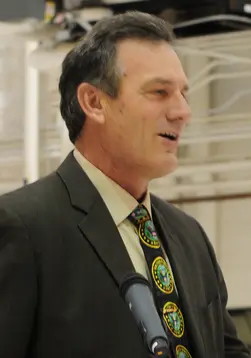As the federal government shutdown enters its 35th day, South Dakota stands on the brink of a crisis that could affect more than 75,000 residents reliant on the Supplemental Nutrition Assistance Program (SNAP). With the Trump administration’s decision to alter the funding mechanism for SNAP, challenges loom as the state grapples with an uncertain landscape of food aid. The decision to restart SNAP benefits using a Department of Agriculture contingency fund, albeit at half the usual amount, only adds to the anxiety faced by low-income families, seniors, and people with disabilities in South Dakota.
South Dakota’s Department of Social Services has been proactive, issuing alerts and guidance to its residents, urging them to plan for possible disruptions in their monthly food benefits. The department announced that it will continue to process applications but cannot disburse benefits until the suspension is lifted. Gov. Larry Rhoden has spoken out about the need for community solidarity during this trying time, emphasizing the importance of supporting local food banks and encouraging residents to donate.

Larry Rhoden
Communities across the state are feeling the ripple effects of this funding gap, with local food banks witnessing a sharp increase in demand. “We’re seeing long lines and more families than ever,” said Janice Larson, director of the Sioux Falls Food Bank. “Our shelves are being depleted faster than we can restock them, and the fear of a public health crisis is real.”
Local grocers and retailers are equally affected. Many of these small businesses rely heavily on SNAP redemptions. Mary Jensen, a local grocery store owner in Pierre, noted, “We’ve had to adjust our inventory and brace for a drop in sales. It’s not just about business; it’s about keeping our community fed.”
As South Dakota navigates these challenges, some local leaders are inspired by measures taken in other states. Governors from states like Virginia and California have declared states of emergency, deploying funds to support food banks. While South Dakota may lack the budgetary latitude to deploy extensive emergency funds, the response from local communities has been commendable.
Churches, local charities, and community organizations have rallied to set up informal networks to aid those in need. Volunteers have stepped up to distribute food parcels, and some towns have initiated community potluck days to ensure no one goes hungry. “It’s heartening to see the community come together,” noted Emily Blackburn, a volunteer with a Rapid City based charity. “During tough times, the spirit of South Dakota truly shines through.”
As far as federal decisions are concerned, South Dakota’s relatively smaller population is often overlooked, yet the impact here is palpable. SNAP is the largest anti-hunger program nationwide, crucial for the vulnerable groups, including seniors and children, who form a significant portion of its beneficiaries. The lapse in benefits thus poses not just a financial hardship but a challenge to the state’s social and community fabric.
The disruptions highlight broader socio-economic issues within South Dakota, where agricultural output plays a significant role in the local economy. The reduced purchasing power affects local farmers, too, as SNAP participants are significant consumers at local farmers’ markets. The disruption illustrates the program’s reach and the systemic dependency on these benefits as a socio-economic linchpin.
While federal judges have mandated the Trump administration to employ emergency funds to restore SNAP benefits, the timeline is indeterminate. The delays could extend from several weeks to months, adding to the distress of families desperately in need of aid. As the state government continues to liaise with federal authorities for a resolution, the yearning for clarity and support grows stronger among South Dakota’s residents.
For those affected, there are existing resources beyond SNAP. Residents are encouraged to contact their local food pantry or visit support@foodbanksd.org for assistance. Additionally, those seeking to contribute or volunteer can reach out via the same contact, exemplifying the state’s tradition of community-driven solutions.
South Dakota stands united in its resolve to weather this storm, embodying the resilience and cooperative spirit that is deeply woven into the state’s ethos. As they confront this crisis, the people of South Dakota remain hopeful for a prompt resolution that will ease the burdens faced by their most vulnerable citizens.